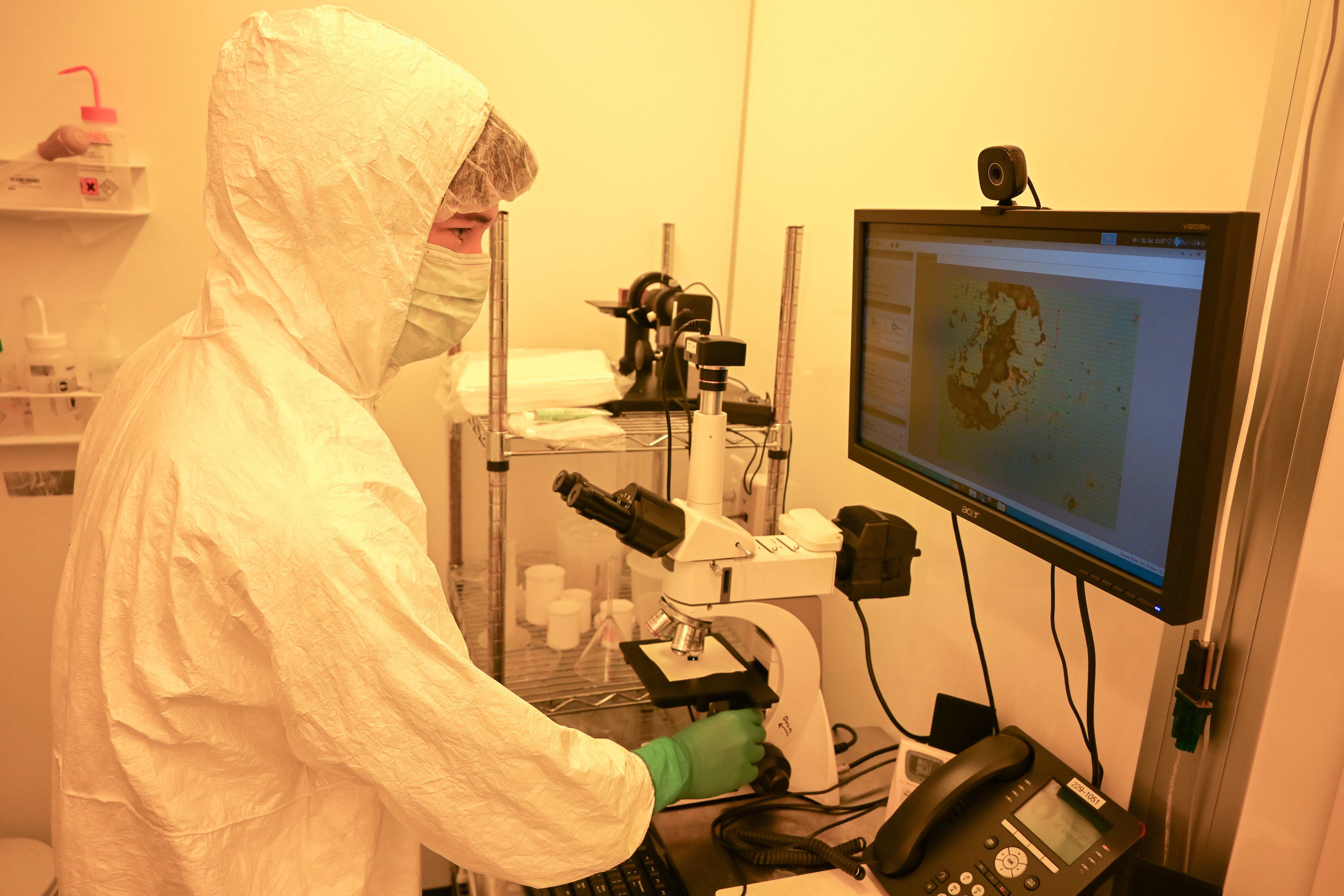Dayton Engineer

Nine Students from Across the U.S. Spent the Summer Completing Semiconductor Research at UD Through NSF REU Program
Nine undergraduate students from universities across the U.S. spent their summer at the University of Dayton through the National Science Foundation’s Research Experiences for Undergraduate Students (REU) program under grant #2244146.
The program directly supports the federal government’s CHIPS and Science Act, which aims to bring semiconductor manufacturing back to the U.S., as well as create thousands of new STEM- and manufacturing-related jobs. Today, the U.S. produces about 10% of the global supply of semiconductors.
REU students spent 10 weeks performing research and receiving training in semiconductor materials, electronic and photonic devices and manufacturing. They worked directly in faculty-led labs in the Department of Electro-Optics and Photonics (School of Engineering) and the Department of Physics (College of Arts and Sciences), along with the Department of Chemical and Materials Engineering and the Department of Electrical and Computer Engineering (School of Engineering).
They also completed Intel’s OASiS certification and sat in on luncheons to learn about semiconductors, graduate school and a future career in research. In addition, students met with the University Program Director at Intel who advised students on numerous potential career avenues both in academia and industry.
Seven students came to UD from Youngstown State University, Morehouse College, University of Texas at El Paso and St. Mary’s University, while two are from UD. Their majors range from electrical and computer engineering, mechanical engineering, chemical engineering and physics.
Zane Perrico, a math and physics major from Youngstown State University, spent his summer in the class 100 cleanroom and Nanofab Lab. He worked with transfer methods of graphene onto silicon oxide.
“One of my professors recommended the program to me,” said Perrico. “At my home institution, I worked in an optics lab and a big component of it was working with photonic devices that I didn’t really understand fully. I figured, seeing this program, there would be a lot of opportunities to go deeper into these devices and learn about them.”
Bryan Amato, an electrical engineering student from the University of Texas at El Paso, didn’t have prior experience with semiconductors but credits the program with opening him up to a new field.
“If you’re involved with technology, you hear the word ‘semiconductor’ everywhere,” said Amato. “I thought this REU would really let me get an informed aspect of how semiconductors are fabricated and how they’re used.”
Amato worked in the class 100 cleanroom and Nanofab Lab as well. This summer, he performed ultra thin silver depositions through sputtering.
“One of the things that I learned about research is that it is repetitive,” Amato said. “But it is nice to actually go through the whole process and get a finished product where you have accurate results at the end.”
As they all go back to their home institutions to finish their degrees, they’re eager to tell other students about the program, continue on to graduate school and possibly find careers in semiconductor manufacturing.
